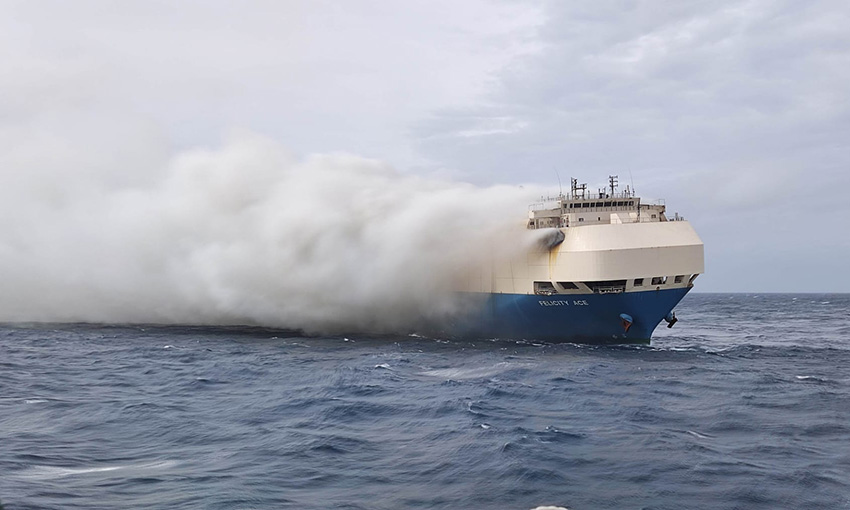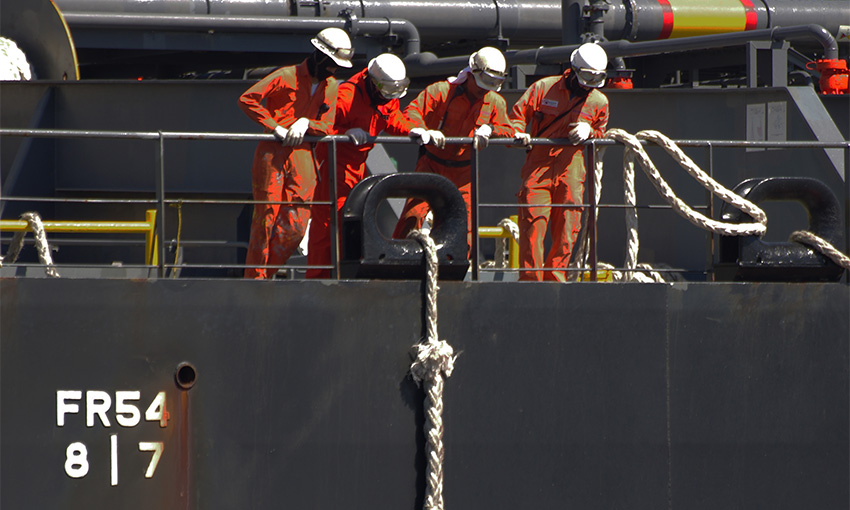THE AUSTRALIAN Maritime Safety Authority is encouraging ship operators to prepare crews for the risks of transporting battery-powered electric vehicles.
AMSA outlined risks and preventative measures in its marine notice 2023/07 – Guidance for the safe carriage of battery powered vehicles on ships.
One of the risks around transporting battery-powered vehicles, according to the notice, is an approximate 25% increase in the vehicles’ weight compared with internal combustion engine vehicles of the same footprint.
AMSA said the additional weight may result in deck loading limitations being exceeded, and an impact on the stability of the vessel, if not accounted for.
The notice also highlighted the risk of fire if a battery cell goes into thermal runaway – a situation where the heat generated within a battery exceeds the amount of heat that is dissipated to its surroundings.
And, while the likelihood of fires for BEVs is very low compared to fires from internal combustion engines, the fires involving BEVs reach full potential in a shorter period.
There is also a significantly increased likelihood that a BEV fire could re-ignite.
“While this information is targeted at ships operating on ocean going voyages, the risks apply equally to all vessels carrying BEVs,” AMSA wrote in its notice.
“Current statistics indicate that BEVs are less likely to catch fire than conventional internal combustion engine vehicles. Electric vehicle battery fires are rare. The available data indicate the fire risk is between 60 times greater for internal combustion engine vehicles. However, the consequences of a BEV fire can be higher.”
ASMA encouraged ship operators to have crews inspect BEVs before and after loading, and ensure crew who conduct safety patrols of the vehicle decks are familiar with the early signs of thermal runaway.
Some early indications include off-gassing; hissing, whistling or popping sounds from the battery; and evidence of battery coolant leakage, smoke or heat from areas of vehicles where the battery is normally located.
“Crew should conduct frequent emergency drills and training in the identification and initial response to a BEV battery fire,” ASMA said.
“Early detection and prompt action can minimise the spread of a fire.”
AMSA also outlined a range of firefighting and fire safety measures for operators developing operational plans for dealing with BEV fires.
“Early detection, confirmation/verification and a short response time are crucial to fight a fire successfully on PCTC,” it said.
“The fixed firefighting systems should be applied first rather than manual firefighting by the crew.
“Vessel operators should consider providing crew with additional safety equipment (such as full-face respirators) to protect them from the toxic vapour produced by BEV fires when conducting emergency duties such as preparing lifeboats for launching.”
AMSA said BEV crews should have additional equipment including a defibrillator, gloves rated for high voltage use and a gas detector to analyse the atmosphere for explosive gases.
The full marine notice on carriage of battery-powered vehicles is available here.





